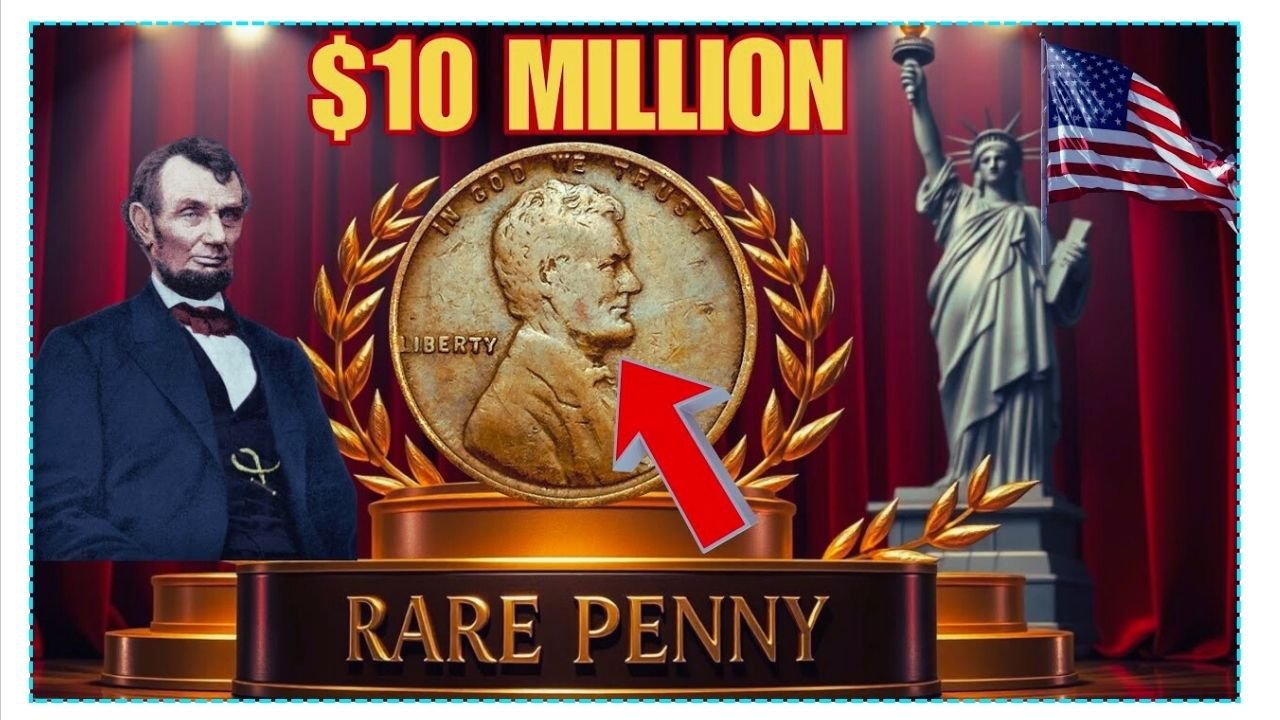The Lincoln Wheat Penny, a small piece of American history minted from 1909 to 1958, might be hiding in your pocket change, and some are worth millions. With its iconic portrait of Abraham Lincoln and wheat stalks on the reverse, this coin is a collector’s dream. Recent auctions have seen rare versions fetch staggering prices, sparking a nationwide hunt for these treasures. Before you dismiss that old penny in your jar, here’s why you should take a closer look and what to know before selling.
The History Behind the Lincoln Wheat Penny
Introduced in 1909 to honor Abraham Lincoln’s centennial birthday, the Lincoln Wheat Penny was designed by Victor David Brenner. It was the first U.S. coin to feature a president’s portrait, a bold move at the time. The reverse, with its two wheat stalks, gave the coin its nickname. Millions were minted across five decades, but specific years, mint marks, and errors make certain pennies exceptionally rare and valuable. Collectors prize these coins not just for their worth but for their connection to American history, from the Great Depression to World War II.
Rare Lincoln Wheat Penny: How a 1-Cent Coin Could Be Worth $10 Million
Why Some Wheat Pennies Are Worth Millions
The value of a Lincoln Wheat Penny skyrockets due to rarity, condition, or minting errors. For example, the 1943 Bronze Penny is a legend in numismatics. During World War II, copper was conserved for the war effort, and pennies were made from zinc-coated steel. However, a few bronze planchets were accidentally used, creating a handful of 1943 copper pennies. One sold for $1.7 million in 2010, and experts estimate a pristine specimen could fetch up to $4.2 million today. Other rare varieties, like the 1909-S VDB with the designer’s initials, are also highly sought after due to low mintage.
|
Rare Wheat Penny |
Key Feature |
Estimated Value |
|---|---|---|
|
1943 Bronze |
Copper error |
Up to $4.2M |
|
1909-S VDB |
Low mintage |
Up to $1.5M |
|
1955 Doubled Die |
Double stamp |
Up to $125K |
How to Spot a Valuable Wheat Penny
Identifying a million-dollar penny requires keen observation. Start by checking the date and mint mark (a small letter like “S” for San Francisco or “D” for Denver under the year). Key dates to look for include 1909-S, 1914-D, 1931-S, and 1943. Use a magnifying glass to spot errors, like the doubled lettering on a 1955 Doubled Die penny. Condition is critical—coins in “mint state” with no wear are worth more. For 1943 pennies, test with a magnet: steel pennies are magnetic, but the rare copper ones are not.
|
Check For |
What to Look For |
|---|---|
|
Date |
1909-S, 1914-D, 1931-S, 1943 |
|
Mint Mark |
“S” or “D” under the year |
|
Errors |
Doubled lettering, wrong metal |
|
Condition |
Shiny, no scratches, clear details |
What to Do If You Find a Rare Penny
If you suspect you’ve found a valuable Wheat Penny, handle it with care. Hold it by the edges to avoid oil from your hands, and store it in a protective sleeve. Never clean the coin—cleaning can drastically reduce its value. Take it to a professional grading service like PCGS or NGC for authentication and grading. These services will verify its authenticity and assign a condition grade, which significantly impacts its market value. Recent auction data shows a 1909-S VDB in top condition sold for $117,500 in 2018, proving the importance of professional appraisal.
The Thrill of the Hunt
The excitement of finding a rare Lincoln Wheat Penny lies in its accessibility. These coins could be in your change, coin rolls from the bank, or inherited collections. Coin shows, estate sales, and even flea markets are prime hunting grounds. Social media buzz, with collectors sharing tips and finds, has fueled interest in 2025. Beyond the potential fortune, the hunt connects you to a century of American history, making every penny a story waiting to be uncovered.
FAQs About Rare Wheat Pennies
Q: How do I know if my penny is a rare 1943 Bronze?
A: Check if it’s non-magnetic (unlike the common steel 1943 pennies) and has a copper color. Consult a professional grader for confirmation.
Q: Where can I sell a valuable Wheat Penny?
A: Reputable auction houses like Heritage Auctions or Stack’s Bowers, or trusted coin dealers, are your best options. Always get it graded first.
Q: Are all Wheat Pennies valuable?
A: No, most are worth a few cents. Only specific years, mint marks, or errors (like 1943 Bronze or 1909-S VDB) command high prices.
Q: Can I find these pennies in circulation today?
A: It’s rare but possible. Check pocket change, coin rolls, or old collections for potential treasures.
Start Your Treasure Hunt Today
The Lincoln Wheat Penny is more than pocket change—it’s a gateway to history and, for a lucky few, a life-changing fortune. With values reaching millions for rare specimens like the 1943 Bronze or 1909-S VDB, now is the time to inspect your coins. Grab a magnifying glass, check those dates and mint marks, and handle potential finds with care. Whether you’re a seasoned collector or a curious beginner, the thrill of discovering a million-dollar penny is within your reach. So, before you toss that old penny, take a second look—you might be holding a piece of history worth millions.
